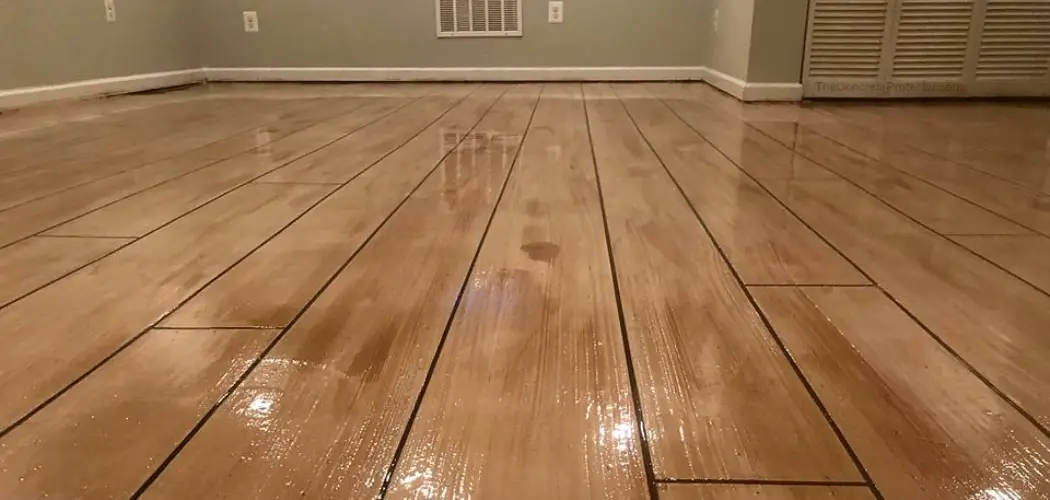Are you tired of looking at that cold concrete floor every day but do not have the funds to put in entirely new flooring? Are you thinking about redoing your feet and want to install wood flooring on concrete? Installing wood flooring on top of your concrete is a great way to make a stylish and functional improvement to your home.
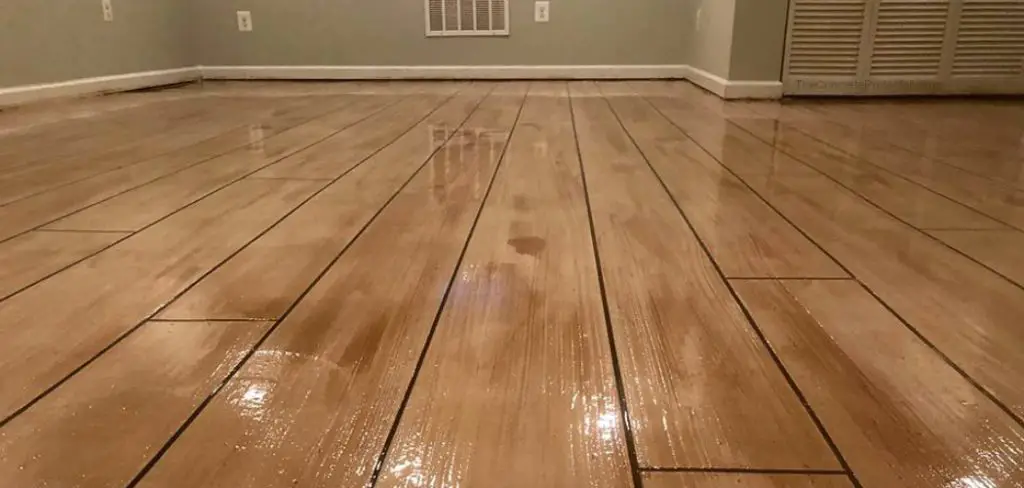
Not only does it look fantastic, but it will also add value and warmth to any space. But what if installing wood floors on concrete seems highly complicated? If you need help figuring out where to start, don’t worry – this article will walk you through the entire process.
Don’t worry – with our step-by-step guide on how to install wood flooring on concrete, we’ll help make sure this transformation goes smoothly, quickly, and without any headaches! Installing wood flooring on concrete can be tricky when done incorrectly or costly when done professionally.
We’ll give you all the tips and tricks we know from our own experience installing wooden floors over a concrete slab so that you can avoid any common pitfalls and provide yourself with beautiful yet cost-effective new flooring! Plus, regardless of skill level, these tips are easy to follow. Ready to get started? Let’s jump right in!
Necessary Items
Before we get started on the actual installation process, let’s talk about what you need. Here is a list of essential items that you will need to install wood flooring on concrete:
- Wood flooring planks
- Moisture barrier sheet or adhesive
- Tape measure and chalk line
- Hammer and pry bar
- Mallet and tapping block
- Circular saw or jigsaw
- Wood glue
- Trowel or notched trowel
- Quarter-round trim pieces and finishing nails
- Floor spacers
10 Steps on How to Install Wood Flooring on Concrete
Step 1: Prep the Concrete Surface
The first step in installing wood flooring on concrete is to ensure your concrete surface is prepped and ready for installation. This means that it must be clean, level, and dry. Any debris, dirt, or unevenness can cause problems down the line, so take the time to thoroughly clean and inspect your concrete surface. If there are any visible cracks or holes, fill them in with a concrete patching compound and let it dry completely before moving on to the next step.
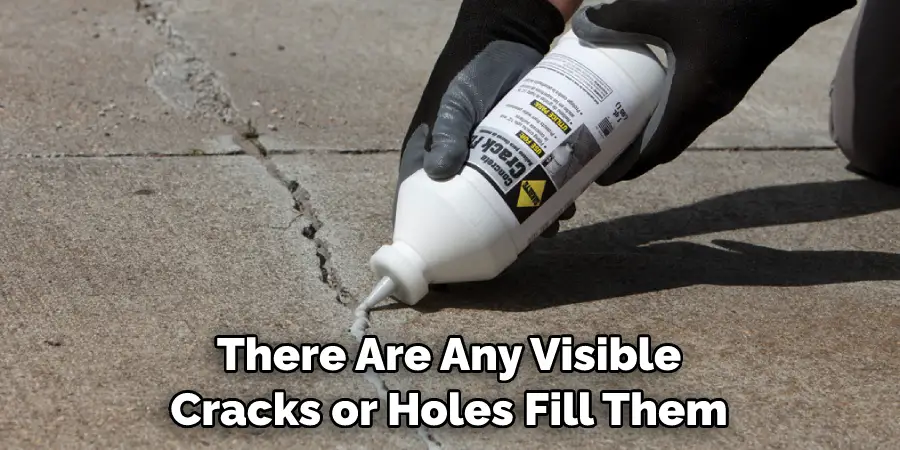
Step 2: Lay Down Moisture Barrier
Moisture is the enemy of wood flooring, so it’s crucial to protect your concrete surface from any potential moisture. If your concrete slab is below-grade (below ground level), you’ll need to lay down a moisture barrier sheet or adhesive on top of it. This will prevent moisture from seeping up from the ground and damaging your new wood floors.If your concrete slab is above-grade, a moisture barrier may not be necessary, but it’s always better to be safe than sorry
Step 3: Measure and Mark the Layout
Before installing any planks, you’ll want to measure and mark out the layout of your wood flooring. Use a tape measure and chalk line to create a grid pattern on the concrete surface that will guide you in laying down the planks later.
Step 4: Start Laying Down the First Row
Now it’s time to start laying down your wood flooring! Begin by placing the first row of planks along the chalk line, with the tongue facing away from the wall. Use spacers between each plank and leave a gap of at least 1/4 inch from the wall to allow for expansion.
Step 5: Glue Down the Planks
Once you’ve laid down your first row of planks, it’s time to glue them down. Use a trowel or notched trowel to spread wood glue on the concrete surface, making sure to cover the entire area where the planks will be placed. Then, carefully place the planks on top of the glue and use a mallet and tapping block to secure them in place firmly.
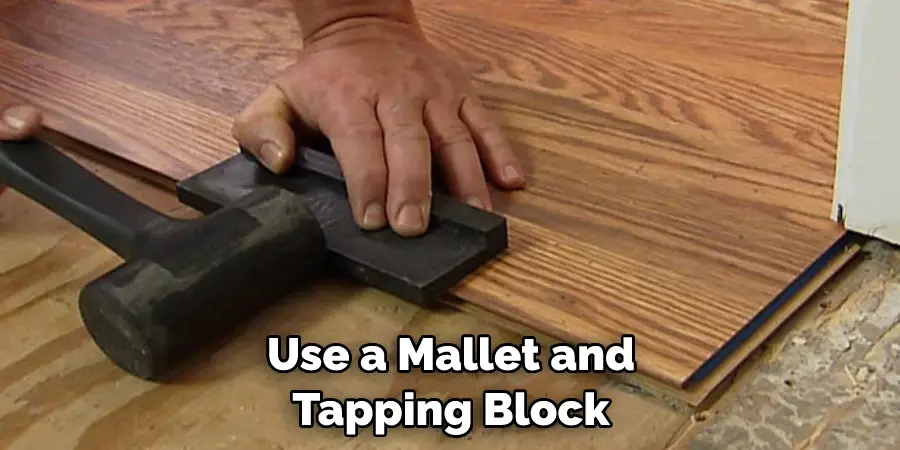
Step 6: Continue Laying Down Rows
Repeat steps 4 and 5 for the rest of the rows, and stagger the end joints for a more natural look. Use spacers between each plank to maintain the 1/4 inch gap, and continue spreading wood glue on the concrete surface before placing down each row.
Step 7: Cut Planks as Needed
You may need to cut planks to fit as you near walls or corners. Use a circular saw or jigsaw to cut the planks according to your measurements carefully. Always wear protective gear and take your time to ensure a precise and safe cut.
Step 8: Leave Space for Expansion
Remember that wood flooring needs room to expand and contract with temperature changes, so make sure to leave a gap of at least 1/4 inch around the room’s perimeter. You can cover this gap later with quarter-round trim pieces.
Step 9: Install Quarter-Round Trim Pieces
To give your wood flooring a finished look, install quarter-round trim pieces along the room’s perimeter. Use finishing nails to secure them and cover the gap between the planks and the wall.
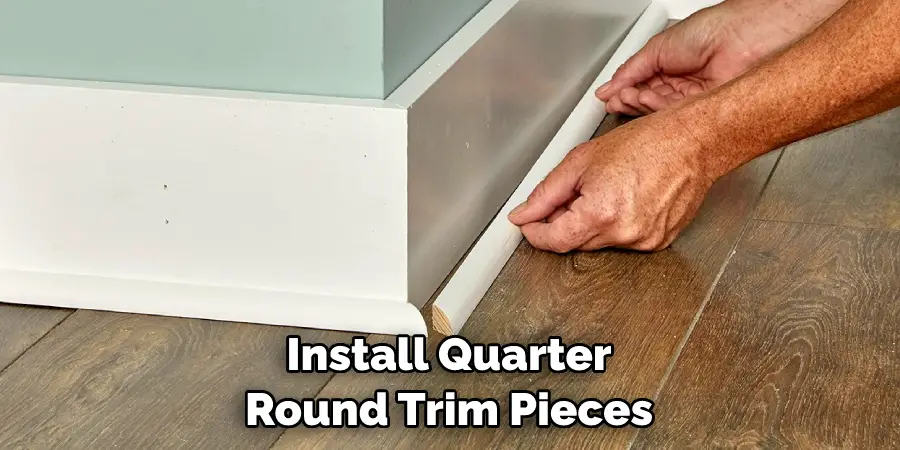
Step 10: Let it Set
After laying down all the planks and installing the trim pieces, let the wood flooring set and dry for at least 24 hours before walking on it or moving furniture back into the room. This will ensure that the glue has fully dried and the planks have properly adhered to the concrete surface.
Congratulations – you’ve successfully installed wood flooring on concrete! With patience and careful attention to detail, you can achieve beautiful new floors that add value and warmth to any space. So don’t be intimidated – follow these steps, and you’ll have gorgeous wood flooring in no time! Following these steps, you can successfully install wood flooring on concrete and transform your space without breaking the bank.
8 Care Tips for Wood Floor Maintenance
Now that your wood flooring is installed, it’s essential to maintain and care for it to ensure its longevity properly. Here are some tips on how to keep your new floors in top condition:
1. Sweep or Vacuum Regularly:
Dirt and debris can scratch and damage the surface of your wood floor, so it’s important to sweep or vacuum regularly to keep it clean.
2. Use Rugs or Mats:
Placing rugs or mats in high-traffic areas can help protect your wood floor from scratches and wear. Make sure to use rugs with a non-slip backing to prevent any accidents.
3. Wipe Up Spills Immediately:
Water can easily damage wood floors, so wiping up any spills immediately is important to avoid warping or staining.
4. Avoid High Heels:
High heels can cause dents and scratches on your wood floor, so it’s best to avoid wearing them inside if possible. If you have pets, regularly trim their nails to prevent scratches on your wood floor.
5. Use Furniture Pads:
Furniture can also cause scratches and dents on your wood floor, so using furniture pads can help protect the surface. Use felt pads on the bottom of the chair and table legs to prevent scratches and damage from furniture. This will also make it easier to move furniture around without leaving marks on your floor.
6. Keep Humidity Levels Stable:
Wood floors can expand or contract with changes in humidity, so it’s important to keep the humidity levels in your home stable. Use a humidifier during dry months and a dehumidifier during humid months to maintain consistent levels.
7. Avoid Harsh Chemicals:
When cleaning your wood floor, avoid using harsh chemicals that can damage the surface or remove protective coatings. Instead, use a mild cleaner specifically formulated for wood floors.

8. Refinish When Necessary:
Over time, your wood floor may show signs of wear and tear. In this case, it’s best to refinish the floor rather than constantly trying to repair small areas. Refinishing will give your wood floor a new look and protect it for years.
By following these care tips, you can keep your wood floor in top condition and avoid needing frequent repairs. With proper maintenance, your wood floor can last for decades and continue to add beauty to your home. So don’t neglect your wood floor – take care of it and enjoy its natural beauty for years!
Frequently Asked Questions
Can I Install Wood Flooring on Any Type of Concrete?
Yes, as long as the concrete is level and moisture-free, you can install wood flooring on any concrete surface. However, it’s best to consult a professional if you have concerns about your concrete subfloor.
How Do I Know if the Concrete is Level and Free from Moisture?
You can use a level tool to check for any uneven spots on the concrete surface. Place a small piece of plastic on the floor and tape down the edges to test for moisture. Leave it for 24 hours – if condensation forms under the plastic, then moisture is present, and you should not install wood flooring until the issue is resolved.
Can I Install Wood Flooring Over Radiant Heating?
Yes, but following specific guidelines for installing wood flooring over radiant heating is important. The heating system should not exceed 85 degrees Fahrenheit, and the subfloor should be properly sealed to prevent moisture from damaging the wood.
How Long Does it Take to Install Wood Flooring on Concrete?
The time it takes to install wood flooring on concrete varies depending on the space size and any additional preparations needed. On average, a professional installation team can take 1-2 days or 3-4 days for a DIY project.
Should I Choose Engineered or Solid Wood Flooring for Concrete?
Both engineered and solid wood flooring can be installed on concrete, but engineered wood is generally recommended as it is more resistant to moisture and temperature changes. It is also more affordable and easier to install. However, if you prefer the look of solid wood, make sure to properly seal the subfloor and monitor humidity levels to prevent any potential issues.
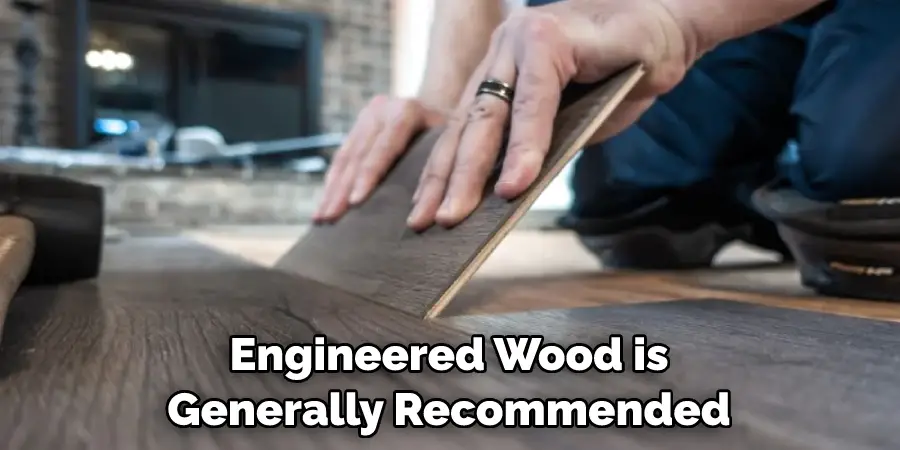
By addressing these frequently asked questions, you can better understand installing wood flooring on concrete and make informed decisions for your project. With proper preparation and care, you can achieve beautiful wood floors that will enhance the look and value of your home for years to come!
Conclusion
Wood flooring on concrete may seem daunting, but it can be done successfully with the right tools and techniques. By following these steps on how to install wood flooring on concrete, caring for your floors, and addressing any concerns or questions you may have, you can achieve stunning wood floors that will stand the test of time.
Remember, if you ever need additional assistance or guidance with your project, don’t hesitate to consult a professional for their expertise. With the right knowledge and resources, you can transform your space and create a comfortable and inviting atmosphere with wood flooring on concrete.

